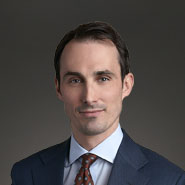Publications

Supreme Court Update: Dewberry Group, Inc. v. Dewberry Engineers Inc. (No. 23-900)
The federal Lanham Act provides that a plaintiff who prevails in a trademark infringement suit is sometimes entitled to recover the “defendant’s profits” derived from the infringement. But does the “defendant’s profits” look only to the named defendant, or can it consider the profits of separately incorporated affiliates that were not parties to the lawsuit? In Dewberry Group, Inc. v. Dewberry Engineers Inc. (No 23-900), a unanimous Supreme Court held that district courts may “award only profits properly ascribable to the defendant itself” absent some legal basis (like veil piercing) for looking beyond the named defendant to related entities.
The case began with a trademark infringement suit between two real-estate companies: Dewberry Engineers and Dewberry Group. (As the Court’s opinion acknowledged, any summary of the facts was itself likely to create confusion because there were “too darn many Dewberrys.”) After Dewberry Engineers emerged victorious, it sought to recover the “defendant’s profits,” as authorized by the Lanham Act. But the only named defendant was Dewberry Group. Unfortunately for Dewberry Engineers, Dewberry Group has no profits: It provides various business services at below-market rates to separately incorporated companies also owned by Dewberry Group’s owner, thus operating at a significant loss. And while those affiliates earn millions of dollars in profits, those profits go to the books of the affiliates alone, not back to Dewberry Group. No matter, said the District Court: It would look to the “economic reality” of the situation and treat the affiliates and Dewberry Group “as a single corporate entity” for purposes of calculating the “defendant’s profits.” It therefore awarded $43 million to Dewberry Engineers, an award (and methodology for calculating it) that the Fourth Circuit affirmed.
In a unanimous opinion by Justice Kagan, the Supreme Court held that the District Court and Fourth Circuit had erred by including the affiliates’ profits in the calculation of the “defendant’s profits.” Kagan began by noting that the ordinary legal meaning of the term “defendant” refers only to the entity actually sued—here, Dewberry Group alone. And while Dewberry Engineers could have added the affiliates as defendants, for whatever reason, it hadn’t. Kagan then turned to “background principles of corporate law,” which generally prohibit courts from treating separately incorporated affiliates as a single legal entity absent some recognized exception. Piercing the corporate veil is one such exception, but Dewberry Engineers had never tried to establish the facts required to pierce Dewberry Group’s corporate veil and reach its affiliates. For these reasons, the lower courts “were wrong to treat Dewberry Group and its affiliates as a single entity in calculating the ‘defendant’s profits.’”
Justice Kagan then turned to an alternative argument raised by Dewberry Engineers to defend the lower courts’ award: Another sentence of the Lanham Act provides that, “[i]f the court shall find that the amount of the recovery based on profits is either inadequate or excessive[,] the court may in its discretion enter judgment for such sum as the court shall find to be just, according to the circumstances.” Kagan rejected Dewberry Engineers’ reliance on that provision, observing that neither the District Court nor Fourth Circuit had based the award on this “just-sum provision.” Instead, the decisions below reasoned only that the courts could disregard the affiliates’ legally separate status. The Court therefore vacated and remanded the case back to the district court for a new award proceeding. Those new proceedings could include consideration of this “just-sum” provision. They could also involve an analysis of whether corporate-veil piercing was an available option. And the lower courts could take up the suggestion of the United States Government as amicus curiae that in calculating a the named defendant’s profits, courts can “look behind” the defendant’s books to identify “the defendant’s true financial gain,” i.e., that Dewberry Group may effectively be earning a profit on its infringing activities even if its books don’t say so.
Justice Sotomayor briefly concurred. She agreed that “principles of corporate separateness,” as well as the Lanham Act’s statutory text, “forbade the lower courts from attributing to Dewberry Group all the profits of its affiliates, absent veil piercing.” But she also noted that such legal principles “do not blind courts to economic realities” or “force courts to accept clever accounting, including efforts to obscure a defendant’s true financial gain through arrangements with affiliates.” She reasoned that there were still “myriad ways” by which courts could consider arrangements with affiliates when calculating the “defendant’s profits.” In particular, she opined that courts could take into account “a non-arm’s-length relationship with an affiliate that effectively assigns some portion of its revenues to the latter,” as well as “evidence that a company indirectly received compensation for infringing services through related corporate entities.”

